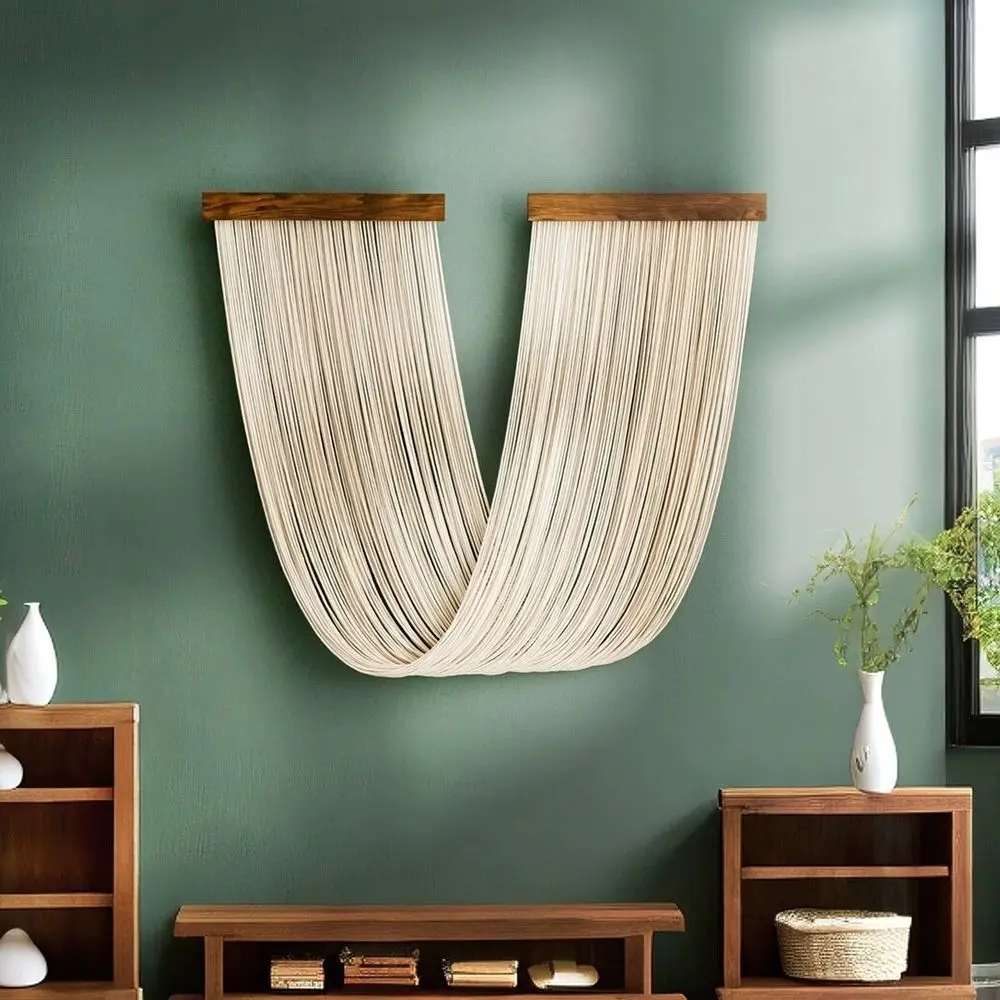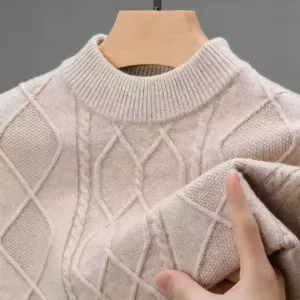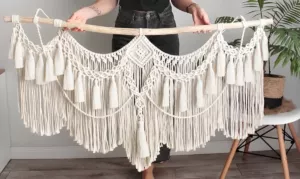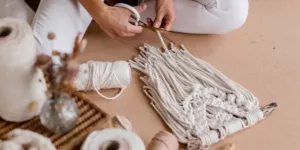Macrame Wave Patterns, the intricate art of knotting strings to create decorative pieces, has seen a remarkable resurgence in popularity in recent years. Among the plethora of designs, the macrame wave pattern stands out for its fluid beauty and deep symbolism. In this blog post, we will explore the cultural and symbolic significance of the wave pattern in macrame, discussing its representation of fluidity, natural beauty, and blessings.
The Historical Context of Macrame
Before delving into the specifics of the wave pattern, it is essential to understand the broader historical context of macrame. The art of macrame can be traced back to ancient times, with roots in various cultures across the globe. From the Babylonians and Assyrians to the Fringes of the 13th-century Arabian artists, macrame has been used to create everything from functional items to purely decorative pieces.
During the Victorian era, macrame became a beloved pastime in Europe, particularly among women. They adorned their homes with intricate macrame curtains, tablecloths, and wall hangings. The wave pattern, however, is a more modern development within the macrame world, yet it draws heavily on the cultural connotations of waves and water prevalent in many ancient traditions.
The Wave Pattern: A Symbol of Fluidity
One of the most striking aspects of the wave pattern is its visual representation of fluidity. Waves are natural phenomena that embody motion and change. This inherent dynamism is beautifully captured through the undulating lines and curves of the macrame wave pattern.
A Metaphor for Life
Life, much like the ocean, is in a constant state of flux. It is full of ebbs and flows, highs and lows. The wave pattern in macrame serves as a poignant metaphor for this inherent unpredictability and the ever-changing nature of existence. It reminds us that, much like waves, we must learn to adapt and go with the flow.
Emotional Fluidity
On a more personal level, the wave pattern can represent emotional fluidity. Our emotions are ever-shifting, often taking us by surprise with their intensity and unpredictability. The delicate, flowing lines of the wave pattern in macrame can serve as a reminder to embrace our emotions rather than resist them. They encourage a sense of balance and tranquility amidst the chaos of life’s emotional tides.
Natural Beauty Captured in Knotting
The macrame wave pattern is also a celebration of natural beauty. The ocean, with its vast expanses and mesmerizing waves, has always been a source of inspiration for artists and craftsmen. By replicating the fluid motion of waves through knotting, macrame artists pay homage to this natural wonder.
Connection to Nature
In many cultures, waves are seen as a symbol of our connection to nature. The rhythm of the waves mirrors the rhythm of our own lives. Creating a wave pattern in macrame is a way to bring a piece of the natural world into our homes, fostering a sense of peace and connection to the environment.
The Art of Imperfection
Nature is inherently imperfect, and the macrame wave pattern embraces this philosophy. Unlike machine-produced items, handcrafted macrame pieces are unique, with each knot slightly different from the next. This imperfection is a testament to the natural beauty that can be found in variability and authenticity.
Blessings and Positive Energy
Many cultures believe that waves carry blessings and positive energy. This belief is deeply rooted in the way waves bring nourishment to the shore, replenishing and rejuvenating the land. It is no surprise, then, that the wave pattern in macrame is often associated with blessings and positive vibes.
A Symbol of Renewal
The constant motion of waves symbolizes renewal and rejuvenation. Much like the ocean purifies itself through its ceaseless ebb and flow, the wave pattern in macrame can remind us of our capacity for self-renewal. It encourages us to let go of negativity and embrace a fresh perspective, bringing positive energy into our lives.
A Decorative Blessing
Incorporating a macrame wave pattern into your home decor is not merely about adding aesthetic value; it is also about inviting blessings and good fortune. According to some folk traditions, the act of knotting itself can generate positive energy. By knotting waves, macrame artists channel this energy into a form that can be shared and appreciated.
Cultural Significance Around the World
The symbolism of waves and their representation in art and craft is far-reaching, with each culture bringing its own unique interpretations and meanings.
Japanese Culture: The Great Wave Off Kanagawa
One of the most famous depictions of waves in art comes from Japan’s Edo period: “The Great Wave off Kanagawa” by Katsushika Hokusai. This iconic woodblock print captures a towering wave about to crash down on unsuspecting fishermen. In Japan, waves often symbolize the strength and unpredictability of nature. The macrame wave pattern can serve as a tribute to this cultural symbolism, embodying both beauty and power.
Pacific Islanders: The Importance of the Ocean
For many Pacific Islander cultures, the ocean is a central element of life, providing sustenance and a sense of identity. The wave pattern in macrame can reflect this reverence for the sea. It not only honors the ocean’s vital role in daily life but also acknowledges its spiritual significance as a source of life and blessings.
Celtic Traditions: The Triskele and Triple Spiral
Celtic art is rich with spiral and wave-like motifs. The triskele, a triple spiral symbol often found in ancient Celtic art, is believed to represent the interconnectedness of life, death, and rebirth. When incorporated into macrame, wave patterns can evoke similar ideas of cyclical renewal and eternal life.
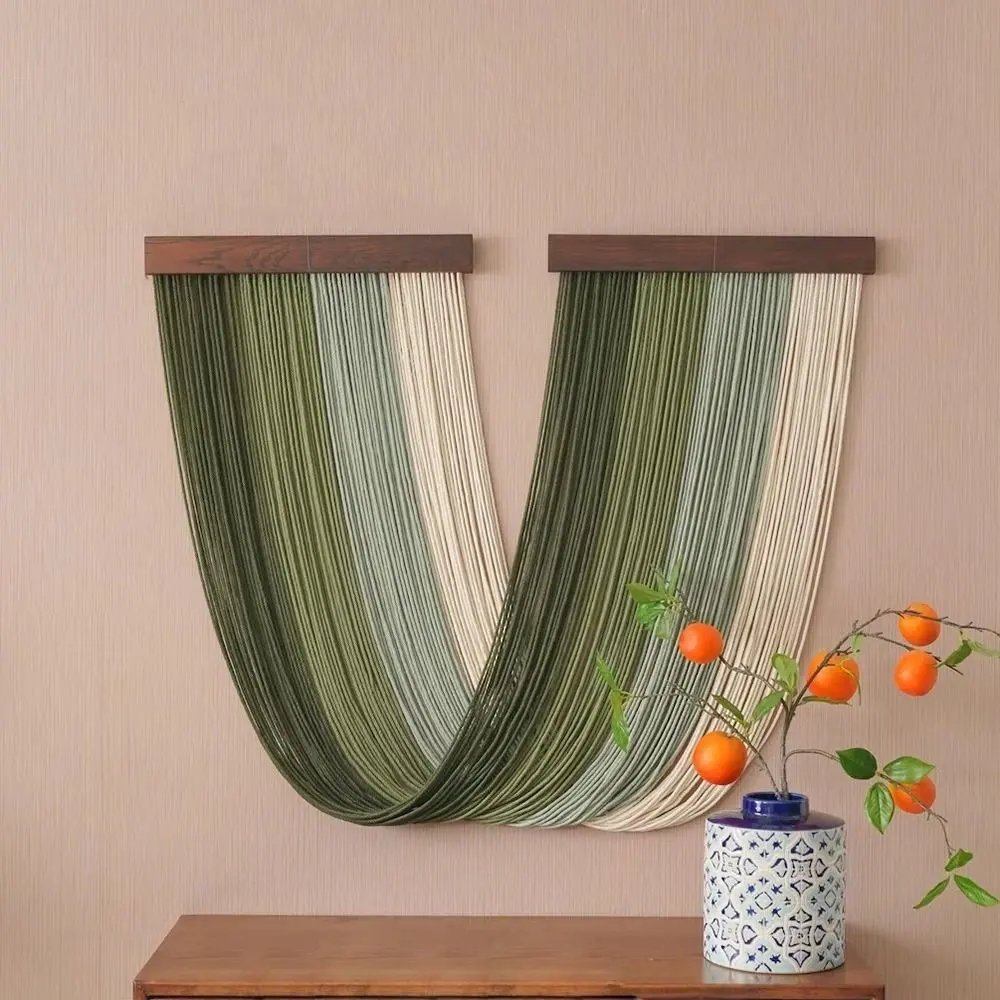
Macrame Wave Pattern Wall Hanging
Macrame Wave Pattern Wall Hanging, designed to bring a sense of natural beauty and intricate craftsmanship into your living space. This exquisite piece is perfect for adding a touch of elegance and warmth to any room.
Incorporating the Wave Pattern into Modern Homes
Given its powerful symbolism and visual appeal, the macrame wave pattern has found a cherished place in modern home decor. Here are some ways to incorporate it into your living space:
Wall Hangings
The most popular way to showcase the wave pattern is through wall hangings. These pieces can serve as focal points in a room, drawing attention with their intricate designs and serene motion.
Functional Items
Macrame wave patterns can be applied to functional items like plant hangers or curtain tiebacks. These subtle touches bring an element of artistic beauty to everyday objects, enhancing the overall aesthetic of your home.
Color Variations
The wave pattern can be made more striking through the use of color. Ombre effects that transition from dark to light shades can mimic the look of waves in the ocean, adding depth and dimension to your macrame piece.
Outdoor Use
Consider using macrame wave patterns in outdoor settings. Garden swings, hammocks, or patio decorations can benefit from the serene, natural beauty of the wave design, creating a relaxing and harmonious environment.
Conclusion
The macrame wave pattern is more than just an eye-catching design; it is steeped in rich symbolism and meaning. Representing fluidity, natural beauty, and blessings, this pattern resonates deeply with our human experience and cultural heritage. Whether you’re an admirer of macrame looking to add a wave pattern to your collection or a DIY enthusiast eager to create your own, understanding the symbolism behind this design can bring an added layer of appreciation and significance to your creation.
By incorporating the macrame wave pattern into your home, you invite not just an element of artistic beauty, but also the profound meanings of fluidity, renewal, and positive energy. As you admire the flowing lines and intricate knots, may you feel a deeper connection to nature, and a sense of tranquility and blessing in your life.

